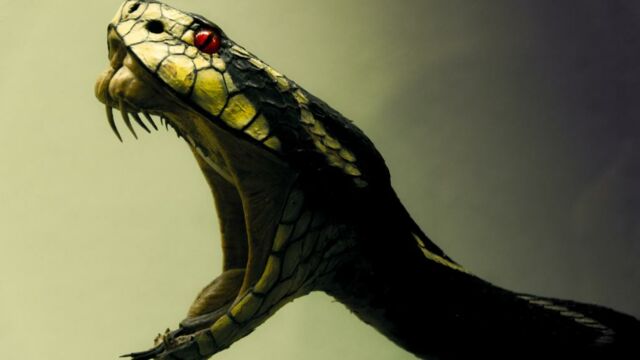When taking science to the next level, a certain measure of courage is sometimes needed. Scientists have been collecting DNA samples directly from snake specimens in Japan in order to uncover the mysteries surrounding their venom. They targeted a common snake species from the Ryukyu islands, named after one of the islands in the archipelago: the Okinawa habu. Also called Protobothrops flavoviridis or honhabu, it is the most venomous of the three species of habu found on the island.
Discover our latest podcast
Following the courageous act of obtaining venom, blood and skin samples from wild specimens, scientists looked at their genome. Their goal was to better understand the mechanisms involved in the evolution of snake venom. They therefore deconstructed the entire genome of the species using a high-performance sequencer at the Okinawa Institute of Science and Technology.
Several families of venomous snakes
With this sequencing the researchers were particularly interested in the genes responsible for venom production. They detected sixty of these genes, and were able to determine that they came from 18 different gene families, which were occasionally common to other more distant species. To better understand the usefulness of this discovery, different families of venomous snakes were studied.
The Okinawa habu belongs to the Viperidae family, which has hemotoxic venom that attacks blood cells and tissues. The other big family of poisonous snakes is the Elapidae, which includes the cobra species, which have a neurotoxic venom that attacks the nervous system. Other snake groups exist, but these two categories are the only ones to consist of species that are uniquely venomous.
A common ancestor of all these species?
Researchers have found similarities with the genomes of other species in these different groups. They were able to single out the existence and the position of a common ancestor on the phylogenetic tree, where two different lines of serpents diverged. This snake would have existed a little over 60 million years ago, and the toxins present in the venom of present-day snakes could derive from that of this ancestor.
Scientists went even further back in the evolution of snakes. According to the findings of their study, the first appearance of venom was probably 185 million years ago, which corresponds to the time when the Toxicofera ancestor differentiated itself from other scaled reptiles known as Squamates.
In this branch, some lizards in the Autarchoglossa group are also poisonous. Professor Shibata, one of the authors of the study, when explaining this connection says:
The gene copies associated with venom production have their origins from long ago, possibly at one of the earliest stages of vertebrate evolution.
A medicinal significance as well
Venoms are complex cocktails composed of many proteins. This research, beyond giving us a better view of its evolution, provides valuable information on the venom of the honhabu, and on how to make more effective antidotes. About 50 people are bitten annually in Japan.
According to the press release, the properties of venoms are also of interest to researchers in order to make new types of drugs, which would potentially be able to fight against cancer, or cardiovascular disease. In the meantime, multiples branches of research on different venomous species should help unravel the enigma of venom production in snakes.
Genome decoding is a powerful tool for understanding the mechanisms involved in the evolution of snake venom. We expect that different species of poisonous snakes produce different protein cocktails, derived from new gene arrangements, so decoding the genome of other snakes is essential to understanding the entire evolutionary process.















